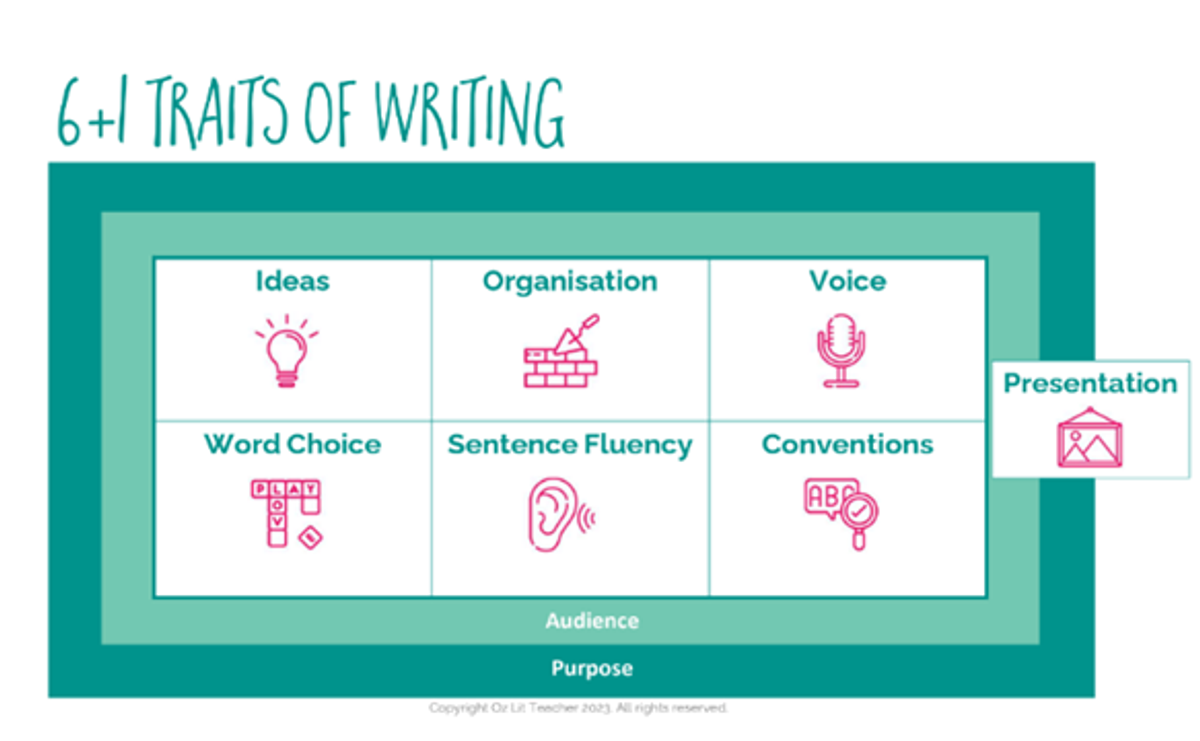Literacy

What exactly are the 6+1 traits of good Writing?
Narissa Leung- Oz Lit teacher
In the 1980’s a group of teachers from Oregon (USA) decided they wanted a consistent set of criteria to assess student writing. They believed that good quality assessment was the starting point in good quality writing instruction; if they could identify the strengths and weaknesses of their students’ writing accurately, they’d be able to target their writing instruction to their students’ actual areas of need.
To do this effectively across a large network of schools, they needed a consistent language around the qualities of good writing, or the elements of an effective piece of writing. They read hundreds of pieces of student writing -in all different genres- and came up with 6 traits that were consistently evident in the strongest pieces of writing:
The Ideas are the main message, the content of the piece, the main theme, together with all the supporting details that enrich and develop that theme. | Organisation Organisation is the internal structure of a piece of writing, the thread of central meaning, the pattern and sequence and how the structure fits the central idea. | Voice Voice is the writer coming through the words, the sense that a real person is speaking to us and cares about the message. It is the heart and soul of the writing, the magic, the wit, the feeling, the life and breath. |
Word Choice Word Choice is the use of rich, colourful, precise language that communicates not just in a functional way, but in a way that moves and enlightens the reader. | Sentence Fluency Sentence fluency is the rhythm and flow of the language, the sound of word patterns, the way in which the writing plays to the ear, not just to the eye. How does it sound when read aloud? That's the test.
| Conventions Conventions are the mechanical correctness of the piece and include five elements: spelling punctuation capitalization grammar/usage paragraphing |
(The +1 of presentation was added at a later date and remains a +1 as the criteria only applies to published pieces of writing.)
The traits in themselves are not a Writing Program, but they do develop teacher and student awareness of what makes good writing. For many students, like in other areas of their learning and growing, they may have strengths in one area and need more support in another. For example, a student may show capability in the secretarial skills of writing such as the conventions or even organisation skills, while other students show great creativity in the authorial skills including ideas, voice and word choice. Writing is a complex process and it can be important to remember all the parts our learner must bring together when composing their own texts!
Sarah Watkins
Acting Assistant Principal/Learning Specialist Literacy

